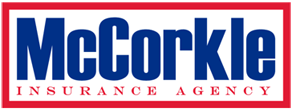Texas Lawmakers Come Up With TWIA Funding on Last Day of Session
It took legislators until the waning hours of the session, but the state-run Texas Windstorm Insurance Association is now funded — at least for a $2.5 billion storm.
What if TWIA needs more than $2.5 billion, enough to cover a 1-in-50 year storm? Texas appears content to cross that bridge only if it gets to it.
The industry said it is pleased in stopping the unlimited assessments they were facing as soon as the wind blew this hurricane season, which began June 1.
“The very first dollar they needed was coming from the industry,” said Joe Woods, regional manager for the Property Casualty Insurers Association of America. “We had to get out of that. What the state came up with was a rational plan for growth.”
Texas’ last-resort insurer was in financial crisis. It continues to pay claims from Hurricane Ike last September and has depleted the state catastrophe reserve fund. TWIA used up all of the cash it had on hand after Hurricane Dolly in July 2008 and expects $2.7 billion in losses from Ike. The association has assessed its member insurers $530 million (BestWire, Sept. 15, 2008).
In a statement, the American Insurance Association called the bill a “reasoned compromise” and said it was “generally pleased” with the outcome of the measure, which changed dramatically as it moved through the legislative process.
Here’s how the funding breaks down. There is nothing in the cat reserve, but TWIA has about $30 million-$40 million in cash on hand. After that, the first $1 billion in claims will be funded by post-event bonds, funded by TWIA policyholders.
“It was important these were post-event bonds,” said Woods. “Otherwise, the industry would be dragged down to buy bonds that might not be needed.”
The next $1 billion will be funded by class 2 bonds, funded by a 70-30 split of surcharges and assessments, respectively. The 10-year bonds carrying 6% interest would amount to about $40 million per year for insurers. Surcharges would be about 2.8% per TWIA policy in the 14 coastal counties. Unlike in the past, insurers cannot look to recoup assessments but the industry can build in the costs in future rates, Woods said.
“While the assessments won’t be recoupable, ending unlimited assessments and making them post-event only will go a long way toward maintaining a healthy insurance market in Texas,” said Fred C. Bosse, regional vice president at AIA.
Lastly, the remaining $500 million also comes via insurer assessments, funded individually by either financing, reinsurance or self-insurance. The cost to insurers for these class 3 bonds is about $70 million per year.
According to the bill, which needs to be signed by the governor, TWIA does not look to be buying any reinsurance, Woods said. Funds not used go toward building up surplus, which will now be untaxed thanks to another proposal in the bill. TWIA will now be declared a nonprofit organization. To accomplish this, the board must be reconfigured so that insurers do not occupy a majority. There will now be four representatives from the industry, three consumer representatives and one agent each from the coast and inland territories.
“It will be interesting to see how this board works; how it reacts to rate pressure,” Woods said.
TWIA will be able to increase rates slightly. Should TWIA need a rate increase of below 5% that does not affect any individual class more than 10%, if can file and use rates. Otherwise, there is an annual rate hearing and the commissioner can either approve or deny the filing, Woods said.
No one knows what will happen if TWIA needs more money to pay claims from a storm. Woods said legislators would call a special session to determine the best course of action. Sandra Helin, spokeswoman for the Southwest Insurance Information Service, said TWIA will always pay its claims; the question is whether insurers would be able to recoup losses of additional assessments in this scenario.
In 2008, the top writers of homeowners multiperil in Texas, according to A.M. Best Co. state/line product information based on direct premiums written, were State Farm Group, with a 29.6% market share; Allstate Insurance Group, with 14.3%; Farmers Insurance Group, with 13.3%; USAA Group, with 7.7%; and Travelers Group, with 5.2%
